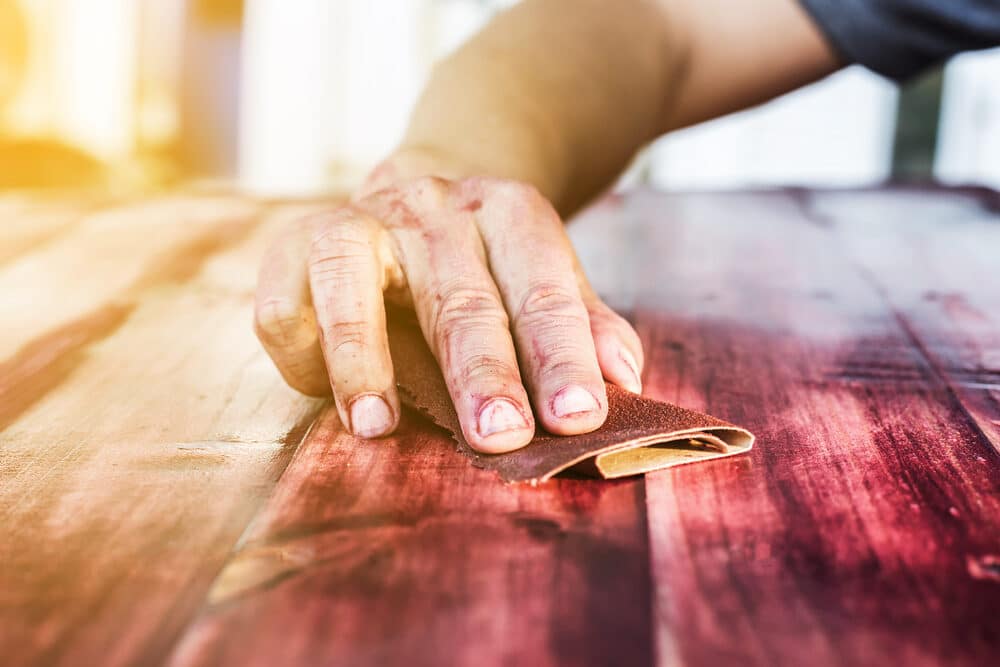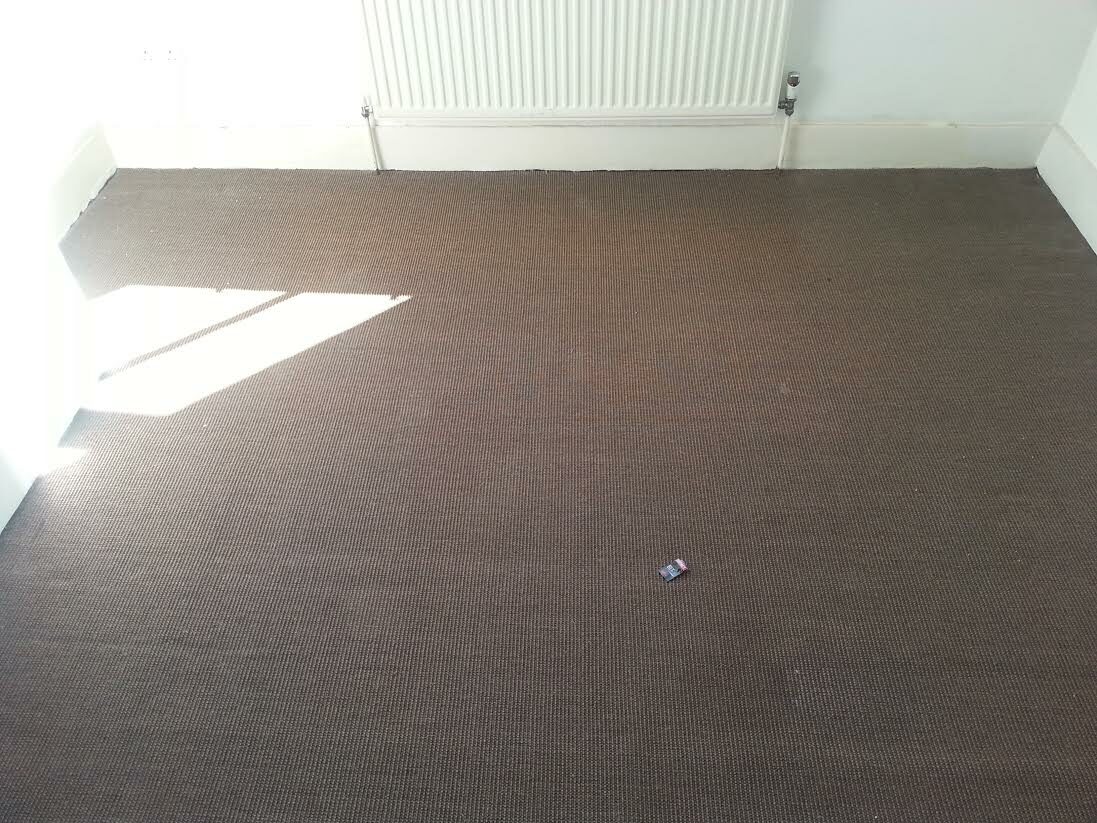London:
Nationwide:
The Best Buffing Compounds for Floor Sanding
Posted on January 4, 2024
Buffing
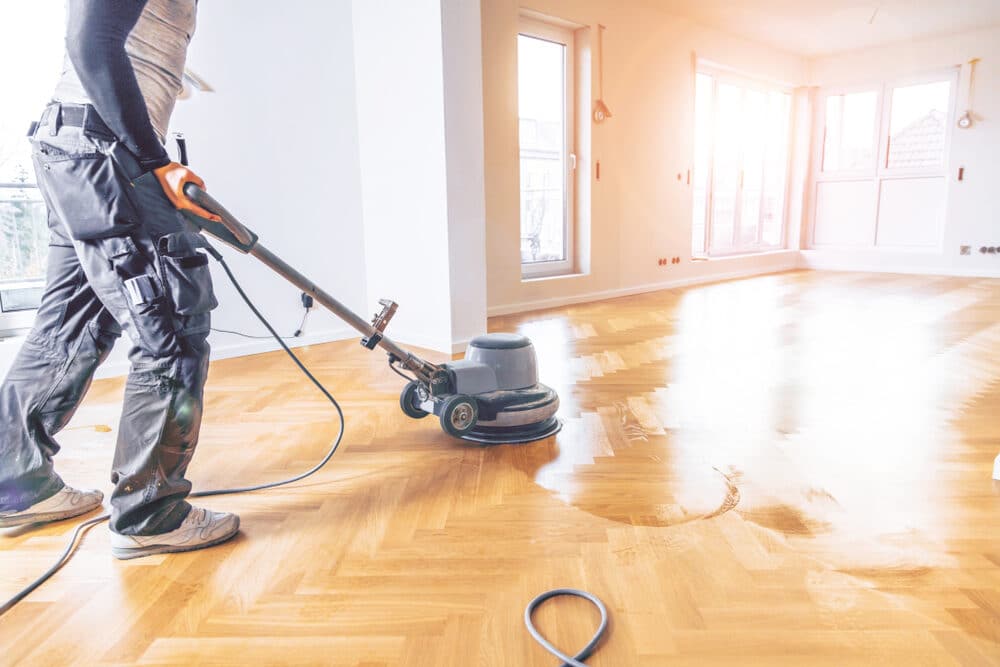
The Ultimate Guide to the Best Buffing Compounds for Floor Sanding
First, let’s understand why floor sanding is important. Over time, floors undergo wear and tear, losing their lustre and smoothness. Sanding is the first step in restoring floors to their former glory. However, sanding alone isn’t enough. This is where buffing compounds come into play. They help in smoothing out the sanded surface, removing any sanding marks, and preparing the floor for the final finish.
Welcome to our comprehensive guide on “The Best Buffing Compounds for Floor Sanding.” In this blog post, we delve deep into the world of floor refinishing, focusing on a crucial aspect that often goes overlooked: the buffing compound. Floor sanding is not just about removing the old finish or levelling the surface; it’s about achieving that perfect smoothness and shine that breathe new life into your floors. And what is the key to this transformation? The right buffing compound.
But not all buffing compounds are created equal. Different types of floors and finishes require different compounds. Choosing the wrong one can lead to subpar results or even damage to your floor. This is why it’s crucial to understand the various buffing compounds available and how to select the right one for your specific needs.
In the following sections, we will explore the different types of buffing compounds, their characteristics, and how to choose the best one for your floor sanding project. Whether you’re a DIY enthusiast or a professional, this guide will equip you with the knowledge to make an informed decision and achieve the best possible results for your floor refinishing project.
Stay tuned as we dive into the world of buffing compounds, where a little knowledge can go a long way in transforming your floors!
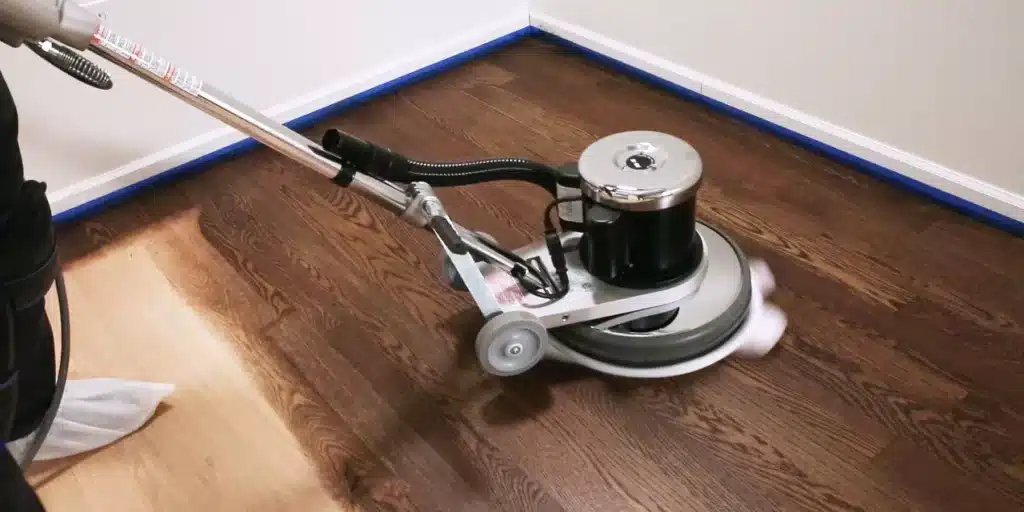
Understanding Buffing Compounds
Before delving into the specifics of buffing compounds, it’s essential to understand what they are and their role in the floor-sanding process. A buffing compound is a material used to smooth and polish surfaces, especially floors, after they have been sanded. It’s a critical step in floor refinishing as it enhances the smoothness of the floor, preparing it for the final finish, be it varnish, stain, or wax.
Types of Buffing Compounds
Buffing compounds come in various forms, each designed for specific types of flooring and finishes. The most common types include:

- Oil-Based Compounds: Ideal for hardwood floors, these compounds add a rich lustre and depth to the wood grain.
- Water-Based Compounds: More environmentally friendly, these compounds are less odorous and quicker to dry, making them suitable for a variety of floor types.
- Wax-Based Compounds: Perfect for antique or traditional finishes, they provide a classic, deep shine but require more maintenance.
- Polymer-Based Compounds: Durable and long-lasting, these are suitable for high-traffic areas and offer a range of finishes, from matte to glossy.
The primary function of a buffing compound is to refine the floor surface after sanding. Sanding leaves microscopic scratches and a somewhat uneven surface. When a buffing compound is applied, it fills in these tiny imperfections, creating a smooth, even base. This not only enhances the aesthetic appeal of the floor but also ensures that the final finish adheres better and lasts longer.
Key Ingredients in Buffing Compounds
Understanding the ingredients in buffing compounds can help you choose the right product. Common ingredients include:

- Abrasives: These fine particles help in smoothing the floor surface.
- Solvents: They dissolve the other ingredients, making the compound easier to apply.
- Lubricants: These help the compound spread evenly and prevent the buffing process from damaging the wood.
- Waxes or polymers: They provide the shine and protect the floor surface.



Choosing the Right Buffing Compound
Selecting the appropriate buffing compound is a critical decision in the floor-sanding process. The right choice can enhance the beauty and longevity of your floors, while the wrong one can lead to subpar results or even damage. Here’s how to make the best choice for your flooring needs:
- Floor Type: The kind of floor you have largely dictates the type of buffing compound you should use. Hardwood floors often benefit from oil-based compounds, whereas engineered wood or laminates might require water-based or specific polymer-based compounds.
- Finish Desired: Are you aiming for a high-gloss, satin, or matte finish? Different buffing compounds offer different levels of sheen, so your preference plays a significant role in the selection.
- Floor Condition: Consider the current state of your floor. For floors with more significant damage or wear, a compound with stronger abrasive properties might be necessary to achieve a smooth base before finishing.
The effectiveness of a buffing compound largely depends on its compatibility with your floor type and the desired finish. For instance, oil-based compounds might be excellent for traditional hardwood floors polishing, but they may not be suitable for engineered wood or laminate flooring.
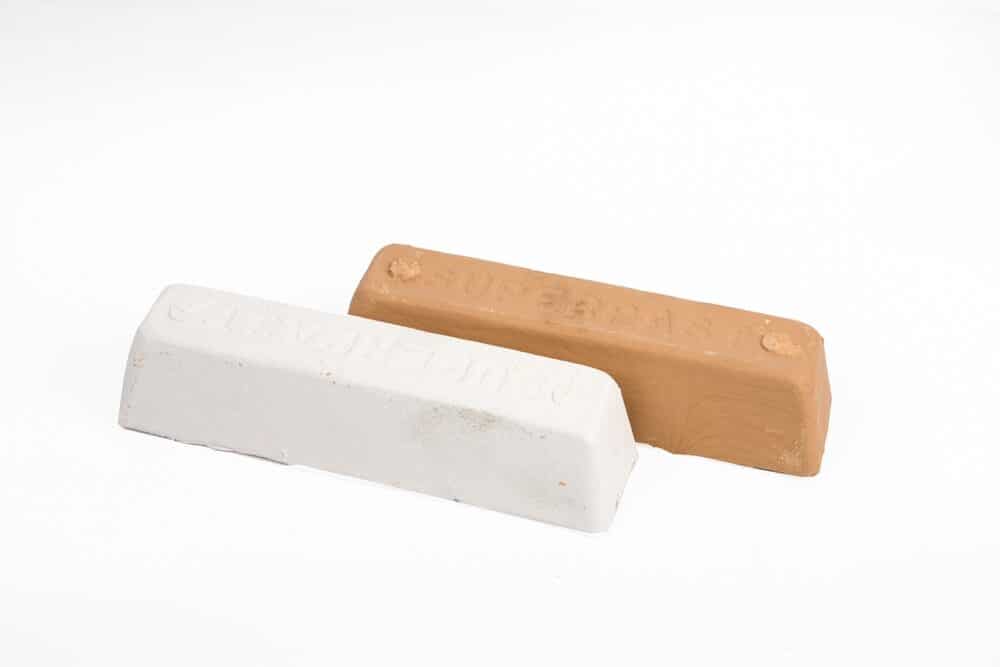
Comparison of Popular Buffing Compounds
- Oil-Based vs. Water-Based:
- Oil-Based: These compounds provide a deep, rich finish and are excellent for traditional hardwood. However, they have a stronger odour and longer drying times.
- Water-Based: These are more environmentally friendly, have less odour, and dry faster, making them suitable for a variety of floor types and quick projects.
- Wax-Based vs. Polymer-Based:
- Wax-Based: Ideal for achieving a classic, deep shine, wax-based compounds are perfect for antique finishes but might require more maintenance.
- Polymer-Based: These compounds are more durable, suitable for high-traffic areas, and come in a variety of finishes.
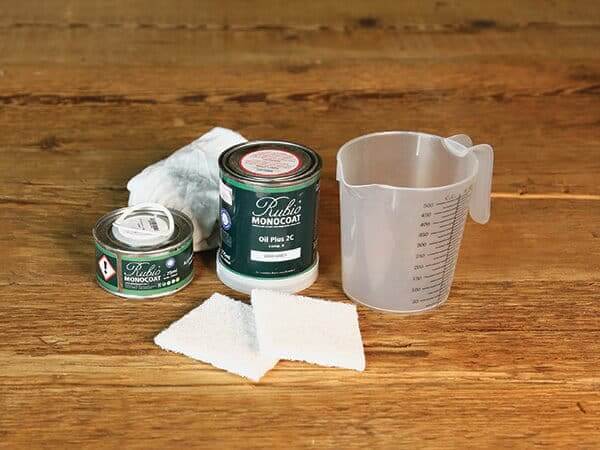
Tailoring to Specific Needs
- For high-traffic areas, consider durability and longevity. Polymer-based compounds might be more suitable as they withstand wear and tear better.
- Eco-Friendly Solutions: Water-based compounds are generally more environmentally friendly, emitting fewer volatile organic compounds (VOCs).
- For Quick Projects: If time is a constraint, water-based or fast-drying compounds are preferable.
Testing Before Applying
It’s always wise to test the buffing compound on a small, inconspicuous area of your floor. This trial will give you an idea of the final look and feel, ensuring you’re happy with the choice before proceeding with the entire floor.
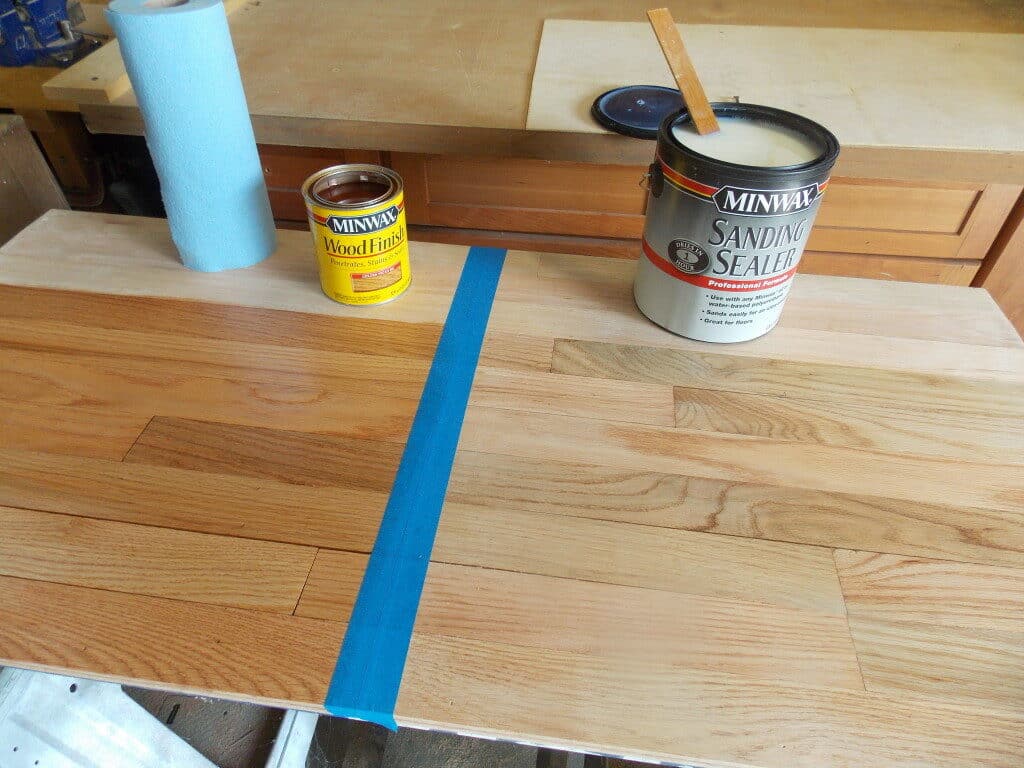
Expert Consultation
If in doubt, consult a professional. Floor refinishing experts can provide valuable advice tailored to your specific floor type and desired outcome.
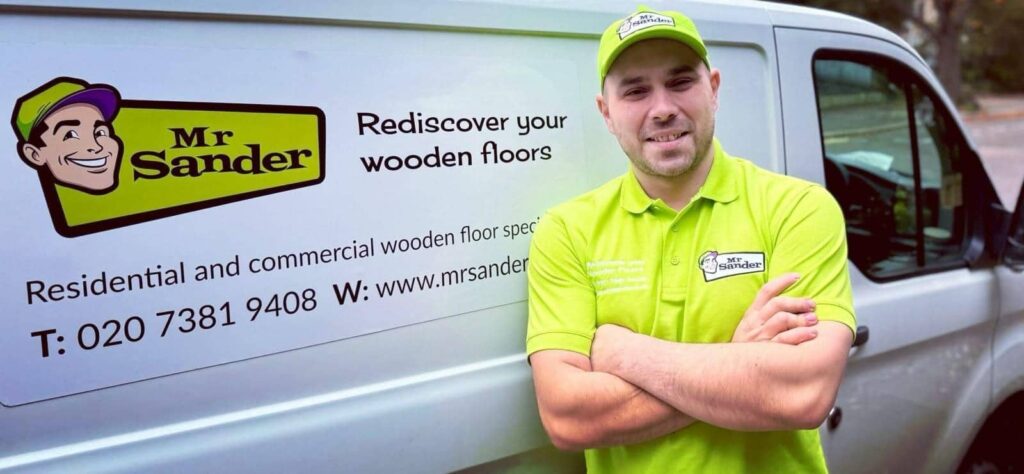
Top Buffing Compounds for Floor Sanding
When it comes to floor sanding, the quality of the buffing compound can make a significant difference in the outcome. Here is a list of some of the top buffing compounds on the market, known for their quality and effectiveness in various floor sanding scenarios.
Bona Mega Wood Floor Finish
- Type: Water-Based
- Best for: Hardwood floors
- Features: eco-friendly, low VOC, quick drying, and a durable, clear finish that doesn’t yellow over time.

Minwax Hardwood Floor Reviver
- Type: Polymer-Based
- Best for: Restoring shine to dull, worn hardwood
- Features: easy application, quick drying, and long-lasting protection without the need for sanding.

Howard Feed-N-Wax Wood Polish & Conditioner
- Type: Wax-Based
- Best for: antique or traditional wood finishes
- Features: Enhances natural wood beauty, adds moisture to prevent drying and cracking, and leaves a lasting shine.

Duraseal Water-Based Polyurethane
- Type: Water-Based Polyurethane
- Best for: high-traffic areas
- Features: Provides a tough, protective coat with a beautiful gloss finish, is resistant to household chemicals, and is non-yellowing.
Osmo Polyx-Oil
- Type: Oil-Based
- Best for: Various wood floors, including exotic woods
- Features: The natural oil blend is eco-friendly, enhances the wood’s natural character, and offers excellent durability.
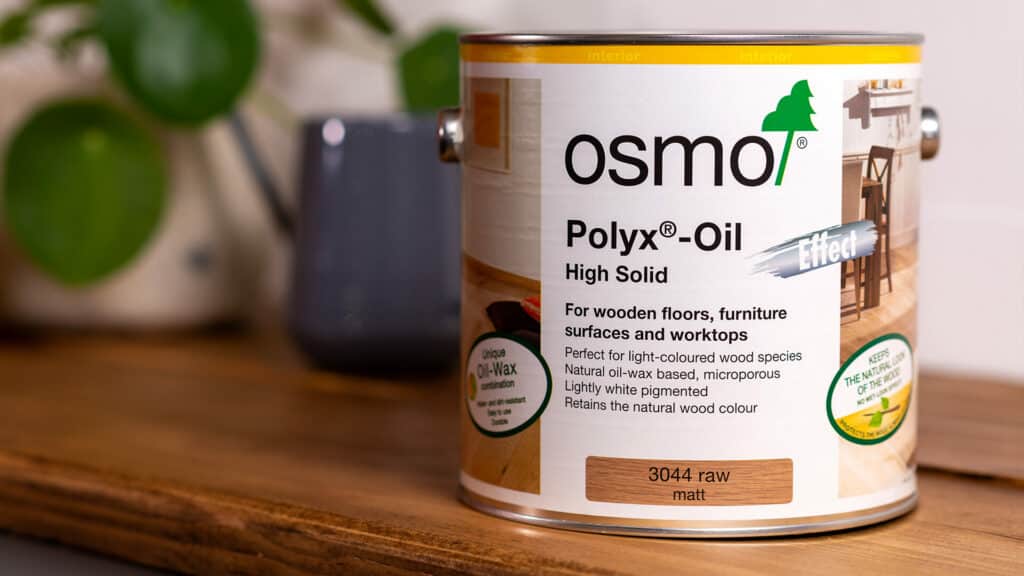
Loba WS EasyFinish
- Type: Water-Based
- Best for: general residential and commercial use
- Features: Versatile, easy to use, quick drying, and a balance between aesthetics and practicality.
Rubio Monocoat Oil Plus 2C
- Type: Oil-Based
- Best for: eco-friendly projects
- Features: zero VOC, single-coat application, availability in a variety of colours, and superior protection.

Basic Coatings StreetShoe NXT
- Type: Water-Based Polyurethane
- Best for: Rapidly curing projects
- Features: fast curing, high durability, excellent for commercial and residential floors, and UV protection.

Pros and Cons of Each Compound
Each of these products has its own unique strengths and potential drawbacks. For instance, water-based compounds like Bona Mega are eco-friendly and dry quickly but may not provide the deep lustre of oil-based finishes. On the other hand, oil-based compounds like Osmo Polyx-Oil enhance the natural beauty of the wood but take longer to dry and have a stronger odour.
Application Techniques for Optimal Results
Applying a buffing compound correctly is as important as choosing the right one. Proper application ensures a smooth, even finish and enhances the durability of your floors. Here are some key steps and tips for applying buffing compounds for optimal results.
Preparing the Floor
- Clean the Surface: Ensure the floor is free of dust, dirt, and debris from sanding. Vacuuming and wiping with a tack cloth can be effective.
- Repair Damages: Fill any cracks or holes with wood filler and sand them smooth.
- Sanding: If not already sanded, lightly sand the surface to ensure the compound adheres properly.
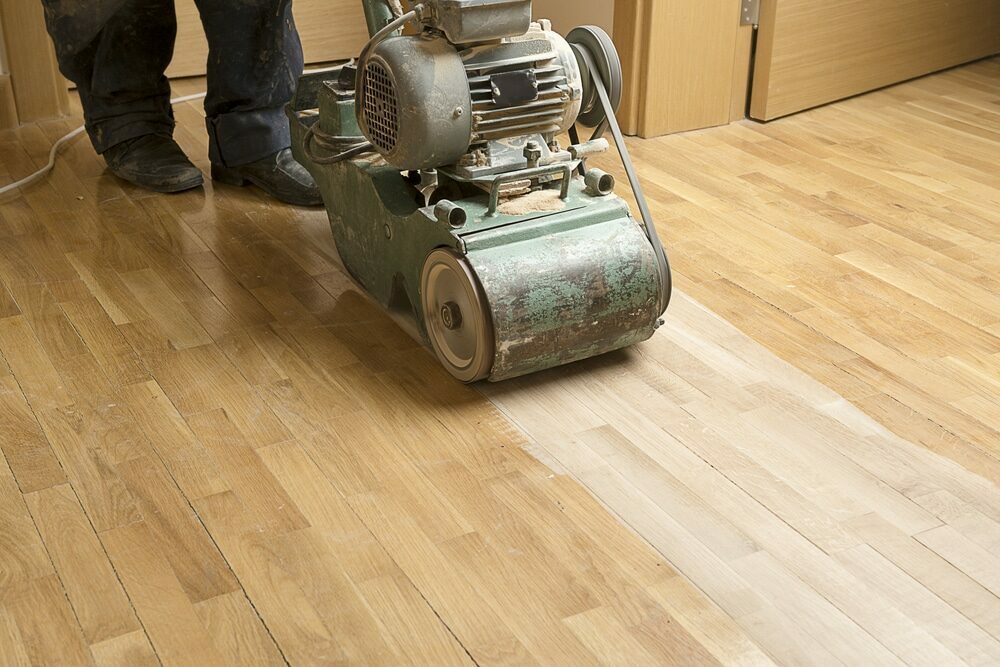
Application Steps
- Mixing the Compound: Some compounds need to be mixed before use. Follow the manufacturer’s instructions for proper mixing.
- Testing: Apply the compound to a small, inconspicuous area to test its compatibility with your floor.
- Using the Right Tools: Apply the compound using a buffing machine or a microfiber mop, depending on the product instructions. For intricate areas, a hand-held buffer may be necessary.
- Even Application: Start from one corner and work your way across the floor. Apply in a thin, even layer, moving in the direction of the wood grain.
- Drying Time: Follow the manufacturer’s advice and let the compound dry. Avoid walking on the floor during this time.
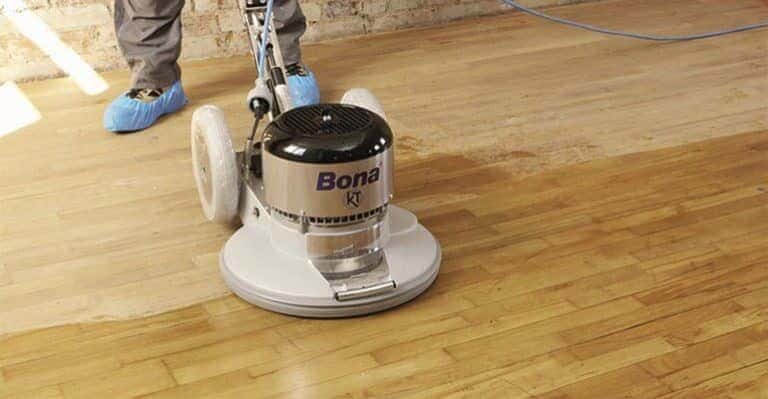
Tips and tricks
- Temperature and Humidity: Apply the compound in optimal conditions, usually between 60 and 80°F with moderate humidity.
- Layering: For some compounds, particularly polyurethanes, applying multiple thin layers can achieve a more durable finish.
- Buffing: After the compound dries, use a buffer with a soft pad to buff the floor for additional shine.
- Ventilation: Ensure good ventilation, especially when using oil-based compounds.
Safety Precautions
- Wear protective gear: use gloves, masks, and safety glasses, particularly when working with compounds that emit fumes.
- Proper Ventilation: Ensure the area is well-ventilated to minimise inhalation of fumes.
- Follow instructions: Always adhere to the manufacturer’s guidelines regarding application and safety.
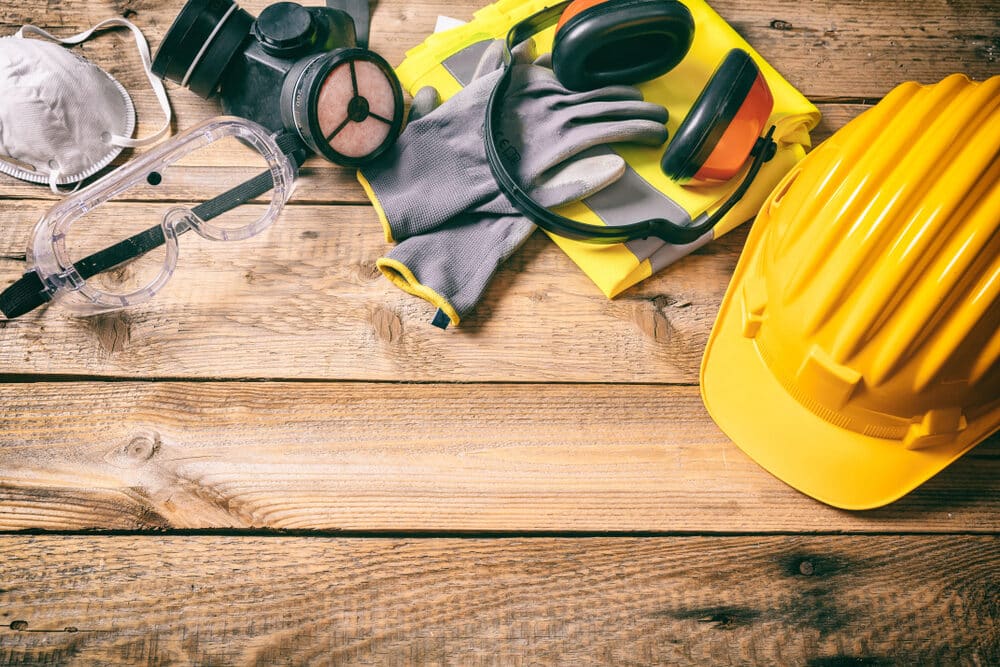
Maintenance after Application
- Initial Care: For the time period that the manufacturer advises, refrain from moving furniture or walking on the floor.
- Regular Cleaning: Use appropriate cleaners for your floor type to maintain the finish.
- Touch-Up Applications: Periodically apply a maintenance coat if the compound allows for it to keep the floor looking its best.
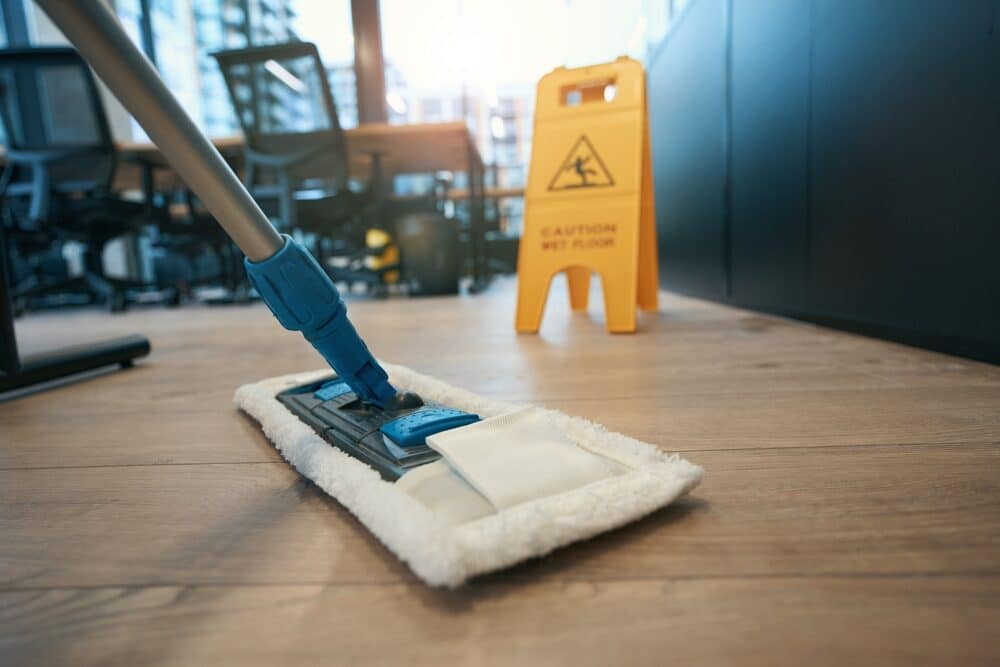
Safety Precautions and Best Practices
When applying buffing compounds during floor sanding, prioritising safety is crucial. The process involves chemicals and machinery that, if mishandled, can pose risks to your health and safety. Here are essential safety precautions and best practices to adhere to:
Personal Protective Equipment (PPE)
- Respiratory Protection: Wear a mask or respirator, especially when using compounds with strong fumes or dust.
- Eye Protection: Safety goggles or glasses are necessary to protect your eyes from dust and chemical splashes.
- Gloves: Use chemical-resistant gloves to protect your hands from irritation or burns from the compound.
- Appropriate Clothing: Wear long sleeves and pants to protect your skin, and consider wearing a workshop apron.
Ventilation and environmental safety
- Adequate Ventilation: Work in a well-ventilated area to minimise inhalation of fumes, especially with solvent-based compounds.
- Control Dust: Use dust extraction systems when sanding and vacuum up dust before applying the compound.
- Proper Disposal: Follow local regulations for disposing of any leftover compound and cleaning rags to prevent environmental hazards.
Safe Use of Equipment
- Proper Handling of Buffers: Ensure you understand how to operate a buffing machine. Incorrect use can lead to uneven finishes or damage to the floor.
- Electrical Safety: Be cautious with electrical cords and outlets, especially in a work area where liquids are present.
- Regular Maintenance: Keep equipment in good working order. Regularly check and maintain your sanding and buffing tools.
Handling and Storage of Buffing Compounds
- Correct Storage: Store compounds in a cool, dry place, away from heat sources and direct sunlight.
- Labelling and Containers: Keep compounds in their original containers with labels intact. This is crucial for safety and in an emergency.
- Avoid cross-contamination: Use separate cloths and containers for different types of compounds to prevent chemical reactions.
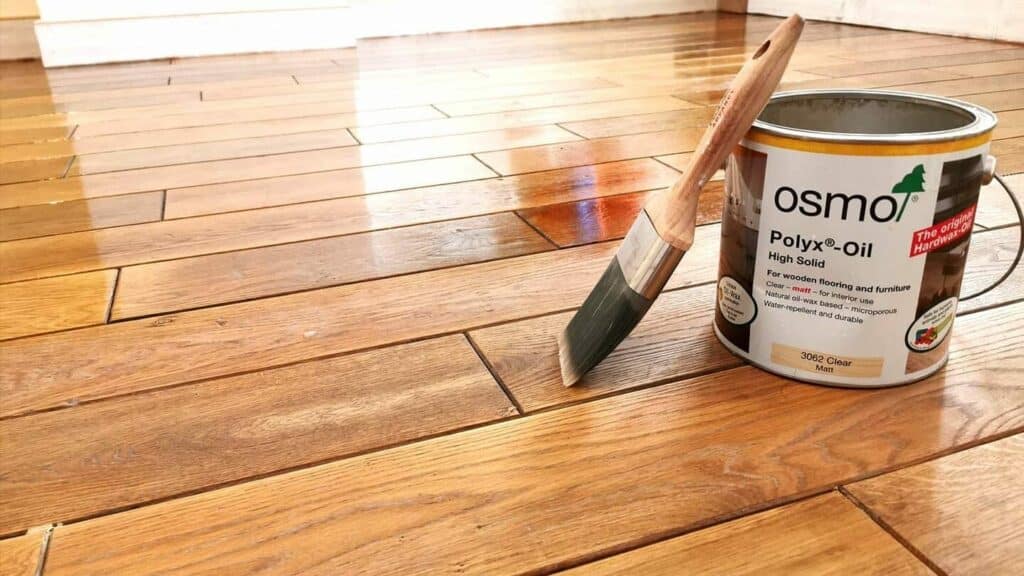
General Safety Best Practices
- Read Instructions: Always read and follow the manufacturer’s instructions for the buffing compound and equipment.
- No Smoking: Ensure there’s no smoking near the work area, as some compounds are flammable.
- First Aid: Have a first aid kit handy for minor injuries and know the procedure for chemical exposure or accidents.

Health and Safety Guidelines
- Chemical Awareness: Be aware of the potential health hazards of the compounds you’re using. Some can have long-term health effects.
- Emergency Plan: Have a plan for emergencies, including contact information for poison control and local emergency services.
- Training and Awareness: If you’re working in a professional setting, ensure all team members are trained and aware of safety procedures.
Maintenance and Care Post-Buffing
After the buffing process is complete and your floors shine with a new lustre, proper maintenance and care are essential to preserve their appearance and extend their lifespan. Here’s a guide on how to maintain and care for your floors post-buffing.
Immediate Care After Buffing
- Curing Time: Allow the floor to cure completely. This can vary depending on the compound used, typically ranging from 24 hours to several days. Avoid walking on the floor during this period.
- Furniture Replacement: When replacing furniture, lift rather than drag it to prevent scratches. Consider using felt pads under furniture legs to protect the floor.

Regular Cleaning
- Dust and Dirt Removal: Regularly sweep, dust mop, or vacuum the floor to remove dirt and grit that can scratch the surface.
- Appropriate Cleaning Products: Use cleaning products recommended for your specific floor finish. Avoid harsh chemicals that can damage the finish.
- Spill Management: Clean spills immediately to prevent staining or damage to the finish. Use a damp cloth and dry the area thoroughly afterwards.
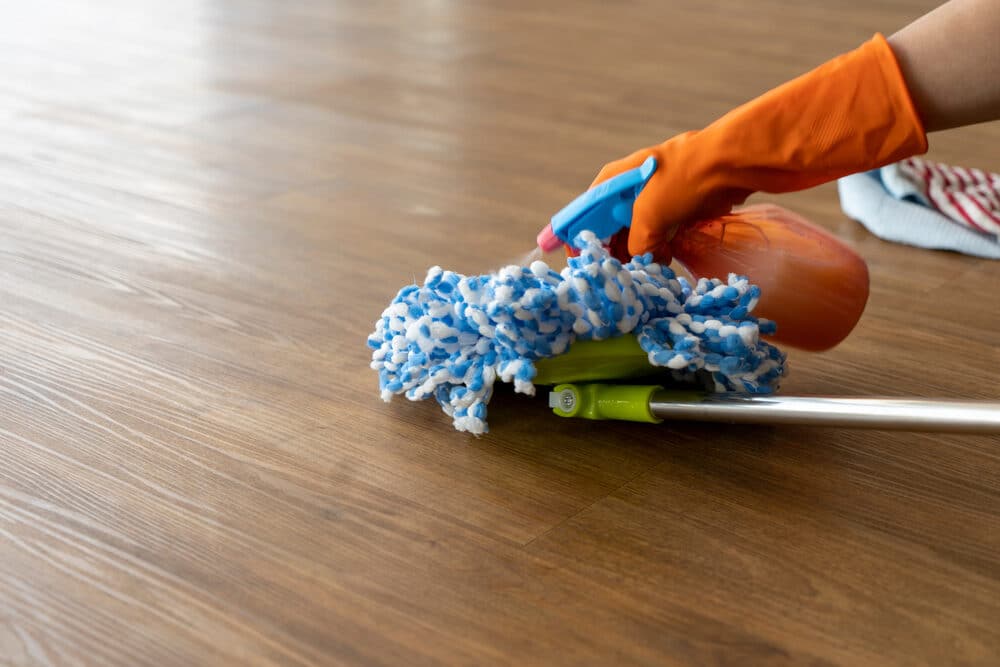
Preventing Damage
- Rugs and Mats: Place mats at entrances to reduce the amount of dirt and grit brought onto the floor.
- Sunlight Protection: Use curtains or blinds to protect the floor from direct sunlight, which can cause discoloration over time.
- Avoid high heels and sharp objects. These can cause dents and scratches on the floor surface.
Periodic Maintenance
- Re-buffing: Depending on traffic and wear, floors may need to be re-buffed every few years to restore shine and remove minor scratches.
- Top Coating: Follow the manufacturer’s or a professional’s advice and apply a maintenance coat of finish.
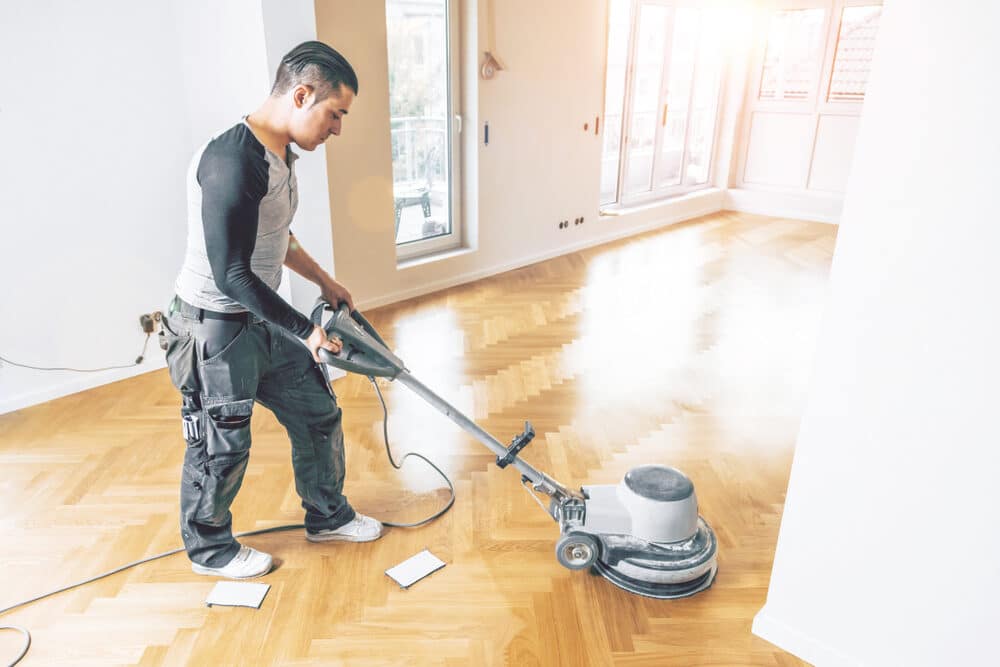
Dealing with Scratches and Damage
- Minor Scratches: Use a touch-up kit or a small amount of finish to repair minor scratches.
- Deep Scratches and Gouges: These may require spot sanding and reapplication of the buffing compound or finish.
Professional Maintenance
- Regular Inspections: Consider having a professional inspect your floors periodically to assess their condition and recommend maintenance.
- Deep Cleaning: Professional cleaning services can provide a deeper clean and address tougher stains without damaging the floor.
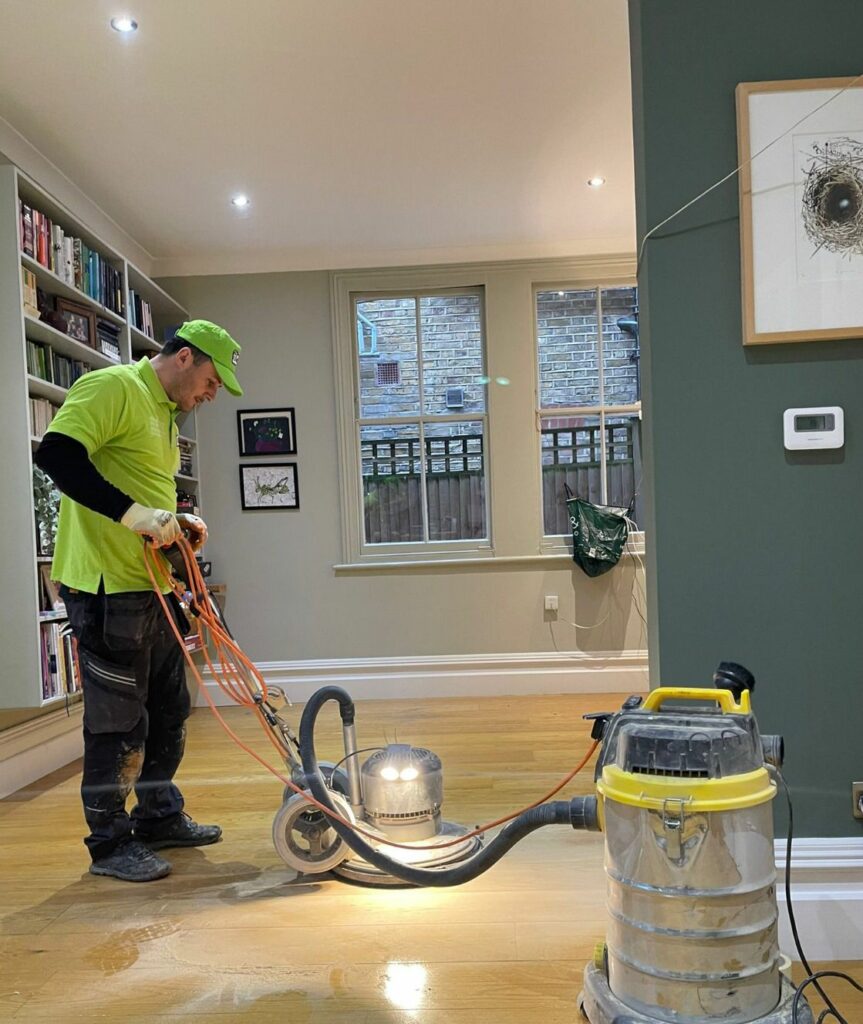
Long-Term Care
- Routine Checks: Regularly check for signs of wear or damage, particularly in high-traffic areas.
- Adapt Maintenance to Usage: Increase the frequency of cleaning and maintenance in areas with higher foot traffic.
Cost analysis and budgeting tips
When undertaking a floor sanding and buffing project, understanding the costs involved and how to budget effectively is crucial. This section provides a breakdown of potential costs and offers tips for budgeting your project.
Buffing Compounds:
- Price Range: Buffing compounds vary in price depending on the type and brand. On average, prices can range from £20 to £100 per gallon.
- Factors Affecting Cost: The type (oil-based, water-based, wax, polymer), brand, and specific features (eco-friendly, fast-drying) affect the price.
Equipment Rental:
- If you don’t own a buffing machine, renting one is an option. Rental costs typically range from £50 to £100 per day.
Labour Costs:
- DIY vs. Professional: Doing the job yourself can save labour costs, which can be significant. Professional floor sanding and buffing services can range from £1.50 to £5 per square foot.
Additional Supplies:
- Include items like sandpaper, applicators, cleaning supplies, and safety gear. These can add another £50 to £200 to your budget.
Unexpected Expenses:
- Always allocate a portion of your budget (around 10–20%) for unforeseen expenses like repairs or additional materials.

Budgeting Tips
- Do-It-Yourself (DIY) vs. Hiring Professionals:
- Evaluate your skills and the complexity of the project. DIY can save labour costs but may require more time and effort.
- Consider the quality and efficiency a professional can provide, especially for larger or more complex projects.
- Quality vs. Cost:
- Investing in a higher-quality buffing compound can yield better and longer-lasting results, reducing the need for frequent touch-ups.
- Balance the quality of the materials with your budget. Sometimes, mid-range products offer a good balance of quality and cost.
- Bulk Purchasing:
- For larger projects, buying in bulk can save money. Some suppliers offer discounts for larger quantities.
- Renting vs. Buying Equipment:
- If you plan to do floor sanding and buffing regularly, investing in equipment might be cost-effective in the long run. For one-time projects, renting is more economical.
- Shop Around and Compare Prices:
- Get quotes from multiple suppliers and contractors.
- Compare the prices of buffing compounds and rentals from different stores.
- Plan and schedule wisely.
- Proper planning can reduce the rental period for equipment and the overall duration of the project, thereby saving money.
- Recycling and Reusing:
- Where possible, reuse materials like applicators or sandpaper to cut costs.

Conclusion
The journey through the world of buffing compounds and floor sanding reveals the intricate balance of art and science involved in this task. The right buffing compound can significantly enhance the appearance and longevity of your floors, turning an ordinary space into an elegant and inviting one. From understanding different types of compounds to applying them correctly and maintaining the finished floor, each step plays a pivotal role in achieving the desired outcome.
Key Takeaways
- Choosing the Right Compound: It’s essential to select a compound that aligns with your floor type, desired finish, and specific project requirements.
- Application Techniques: Proper application, including preparation, even application, and following safety precautions, is crucial for a flawless finish.
- Maintenance is Crucial: Post-buffing care determines how well the floors maintain their new look over time. Regular cleaning, protection from damage, and periodic re-buffing are key.
- Cost-Effective Approach: Understanding costs and budgeting effectively can make your floor sanding project more manageable financially without compromising on quality.
In conclusion, whether you are a DIY enthusiast embarking on a floor refinishing project or a professional seeking to enhance your craft, understanding the nuances of buffing compounds is essential. With the right approach, tools, and care, you can transform and preserve the beauty of your floors, adding both aesthetic and functional value to your space. Happy sanding and buffing!

Sanding
We provide virtually dust-free sanding with our continuous belt machinery with mobile extraction units, giving you a safer environment for your family.
Oiling
This organic finish not only adds beauty to your home but also has exceptional water-repellent characteristics, making it easier to clean and maintain.
Waxing
This natural floor finish offers the softest and most mellow appearance – and leaves your floor able to breath.
Buffing
Using soft buffing machines (and hand-polishing where required) will bring a wonderful sheen to your newly-finished floor.
Repairs
We offer a full assessment of your wooden floors to determine what repairs are needed to provide the perfect working surface for the later stages of sanding, staining and sealing.
Restoration
We offer a comprehensive restoration process designed to address floors that are improperly fitted or damaged over time through wear and tear.
Request a fixed price quote for your wood floor restoration now
Simply enter your postcode below to get started.
Services
Wood Floor Sanding Wood Floor Restoration Wood Floor Scratch Repair Squeaky Wood Floor Repair Parquet Floor Sanding Parquet Floor Restoration Commercial Floor Sanding Church Floor Sanding Community Centre Floor Sanding School Floor Sanding Gap Filling Gap Filling with ResinCopyright © Mr Sander®
Privacy & Cookies Terms & Conditions Complaints Procedure Cancellation Rights Sitemap